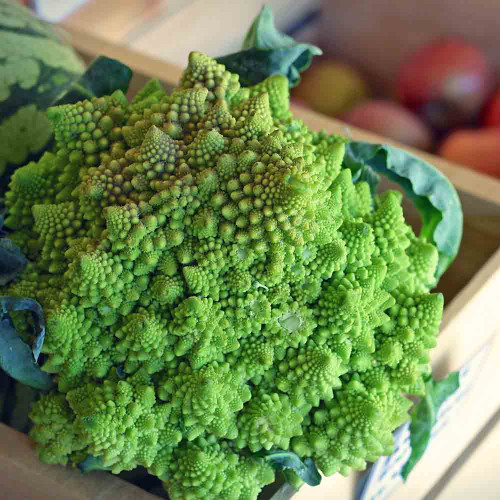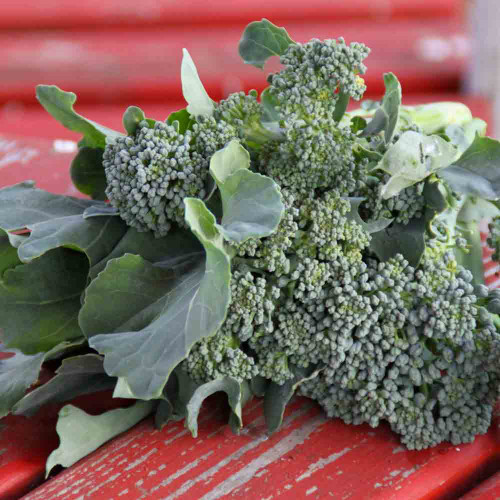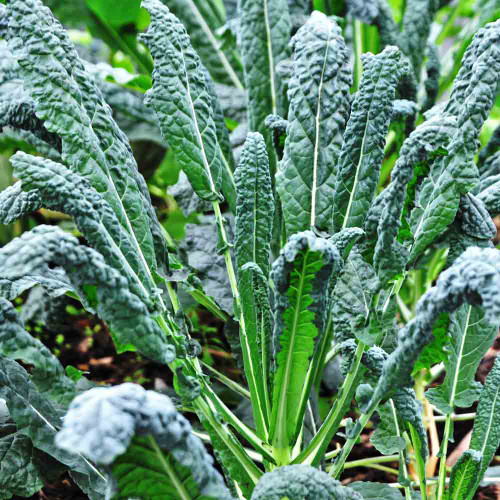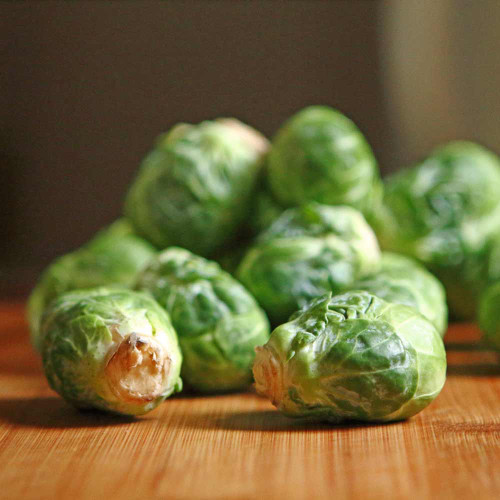Description
Spigariello Broccoli - Prolific Hearty Sweet Flavor
Spigariello is the traditional southern Italian leafy broccoli. The greens are also known as Spigariello Liscia, Cima di Rapa, Broccoli Spigarello, and Cavolo Broccolo a Getti di Napoli.
This cool-season crop withstands moderate frosts, delivering multiple harvests of broccoli-flavored leaves and tops over a long season, making it the perfect cut-and-come-again crop – the more you cut, the more you get!
Although it resembles raab-rapini, its flavor is hearty yet sweet like a cross between broccoli leaves and Tuscan kale without the bitterness. The very dark green narrow leaves are a tender, succulent, and crunchy ingredient in salads, sautées, pizzas, stir-fries, and soups.
One of the most renowned vegetables in southern Italy, it’s the essential ingredient in Minestra Nera – Neapolitan black soup – a Naples specialty.
If you’ve ever been frustrated trying to grow regular broccoli, fighting off aphids and cabbage worms for the privilege of possibly harvesting a couple of disappointingly small heads, spigariello just might be the answer you’ve been looking for.
Details
Chefs describe it as similar to kale but more velvety in texture and with a sweeter flavor. It’s just as versatile as kale, perhaps even more so, since you can eat it raw, cooked, on pizza, or as a salad without having to take out the center rib.
Spigariello looks similar to broccoli, growing 3-4’ tall, shaped just like a broccoli plant but with narrow leaves instead of shoots and heads. The medium blue-green vegetation is full and bushy with long slender leaves that are attached along the plant’s main stems. Like broccoli, it’s easy to grow and extremely productive.
While it tolerates warmer growing conditions than either broccoli or cauliflower, it should still be treated as a cool-season vegetable and planted for spring and summer harvests. Mild summer gardens can often grow Spigariello from early spring through fall until stopped by hard freezes.
In good soil, it will grow into a big, bushy plant with a small central flower head looking a little like broccoli. Harvest that central flower while young encourages small side branches to develop, each with a tiny shoot. This gives you an almost continuous harvest from the same planting for many weeks since new shoots replace the ones you pick.
History
Spigariello’s origins are mostly unknown, and definitely not agreed upon, with some experts tracing it back to Asia while other experts deem Italy as its birthplace. Most broccoli flowers are yellow, but they are white on Spigariello, leading experts to link it to other Asian broccoli greens that have almost exclusively white flowers.
Regardless of its origins or how it arrived, Spigariello is closely associated with Southern Italy, specifically Napoli and Puglia, where it has been growing for centuries. It migrated north into Germany and France through trade sometime in the late 16th century.
Spigariello’s arrival in America was through an Italian American family growing it in their Seattle garden in the mid to late 1990s. Bill Coleman of Coleman Family Farms in Carpinteria, CA obtained seeds and began growing Spigariello, distributing it at the Santa Monica and Santa Barbara Farmers Market for about 10 years before it was noticed by Southern California chefs as an unusual, locally grown green. From there, chefs across the US began sourcing seed and using it in their restaurants while growers introduced it to farmers’ markets.
In Naples, Italy, Spigariello is often incorporated into Minestra Maritata, which roughly translates to “married soup,” exemplifying the blending of flavors and ingredients. Even today, minestra maritata is a traditional, vegetable-filled soup in the region.
The soup was originally eaten among poor households, combining various leftover meats, vegetables, and bitter greens that could be found growing locally.
As it became more popular in Italy, many Italian households of the upper and middle class also began cooking the soup using locally sourced ingredients, such as Spigariello, transforming the dish into a beloved holiday meal. The soup has widely grown in popularity outside of Italy and has been mistranslated into English as “Italian wedding soup,” creating many different legends and stories surrounding this name.
Uses
Spigariello has a tender yet sturdy texture so it can be used both raw and cooked such as sauteed with other vegetables, mixed into grain bowls, stirred into pasta, or used to stuff roasted meats. In addition, Spigariello can be shredded into soups, or baked into casseroles.
It pairs well with aromatic herbs like garlic, and onions, goat, cheddar, and parmesan cheeses, cream-based sauces, citrus, legumes, peppers, tomatoes, potatoes, winter squash, mushrooms, and meats such as beef, lamb, and poultry.
The young stalks are prepared and eaten like asparagus. In Italy, it is usually cooked with garlic, olive oil, and white wine. Broccoli can be eaten fresh or cooked. Used traditionally on pizza in Naples with olives and chili in pasta dishes, or just boiled or sautéed and served as a side dish.
Growing Tip
Sow Spigariello seeds indoors in late winter just like broccoli transplants, or plant the seeds directly into the garden in early spring. It makes an excellent fall vegetable garden addition by planting seeds during late summer.
The seeds germinate well and vigorously, so thick sowing and subsequent thinning aren’t needed. Plant seeds in pairs 8-12” apart. In warm soil, the seedlings will sprout and begin growing within a few days of being planted.
Adult plants tolerate heat better than any other broccoli, yet are frost-hardy with resistance against the normal group of Cole family pests such as cabbage worms and aphids.
Fertile, loose soil grows the best flavors.
Learn More
From the soil to the seed to the food you eat - we'll help you grow your best garden!
5 Reviews
-
Spigariello Broccoli
Excellent germination! I purchased seeds from a seller on Etsy and had 0% germination. I am extremely pleased with these seeds as every single seed has germinated! Thank you for a quality product! I will be purchasing from you again in the future.
-
Wonderful addition to salads and soups
Started on January 26 and transplanted March 26. Excellent germination and seedlings. The growth habit was impressive, plants grew to 3.5 feet tall and approximately 3 feet wide. It was an attractive addition to the garden with its soft, light blue-green leaves. The plants appeared very healthy with no disease but after a couple of months became infested with cabbage worm which we controlled with B T. We began harvesting May 14 through June 24. The leaves made a wonderful addition to salads and soups. Taste had a slightly broccoli-kale like flavor. Seeds were again started indoors on August 3 and transplanted on September 17. We began harvesting on Nov 19. Same good results as our spring evaluation. An unusual and excellent variety to grow in this area.
-
strong, healthy producer
I was amazed that during the long growing season no worms chewed up the leaves, which I fully expected. Leaves remained a lovely color, and still have not gotten bitter, as I thought they would. Grew to be taller than I expected, but that was fine--more leaves that way.
-
A cascade of tender leaves
I grew Spigariello Liscia for the first time last year in my PA garden out of curiosity and grew it again this year for its looks alone. It is one beautiful plant. It grows into a 2-foot high and wide mount of slender leaves that cascades over the edge of the bed. I add a few leaves to other vegetables I cook.
-
Spigariello Greens
Great plant for green production in northern Virginia. Planted indoors and transplanted about 20 plants into a raised garden in April. First cutting produced 8 meals for 4. I took off some of the leaves and let the rest grow for a second cutting. I am going to try it as a fall crop by planting around July 15.













